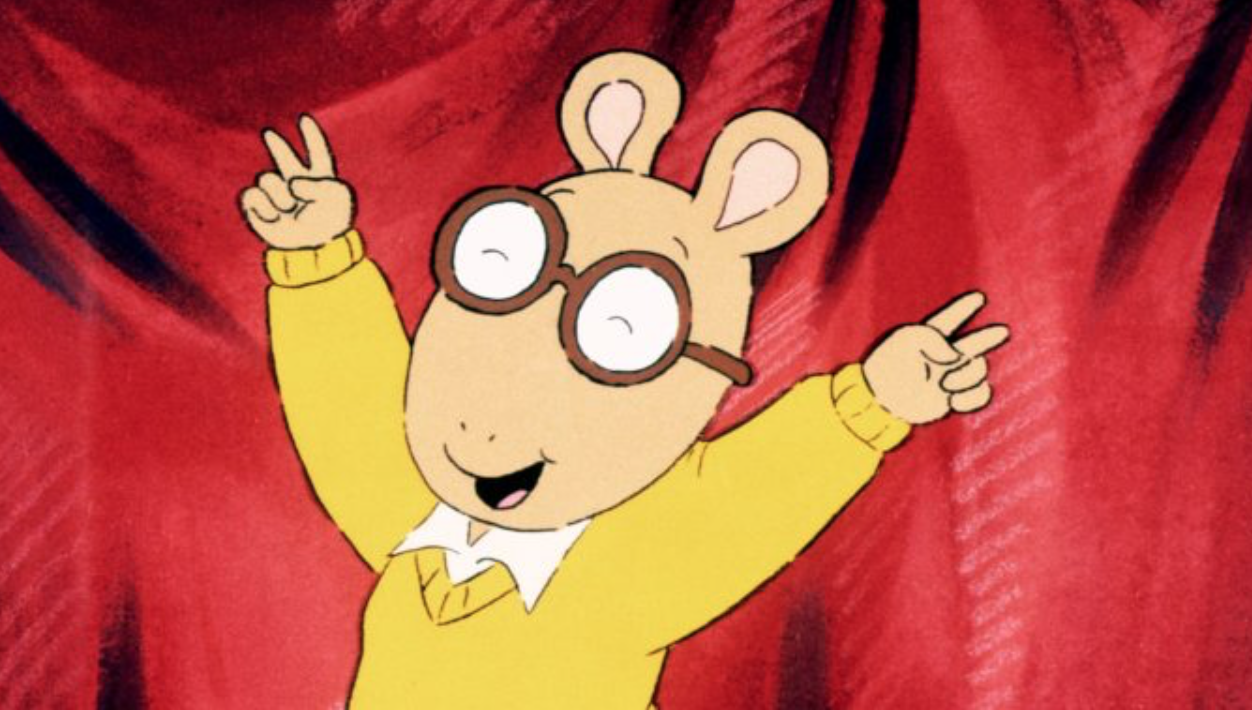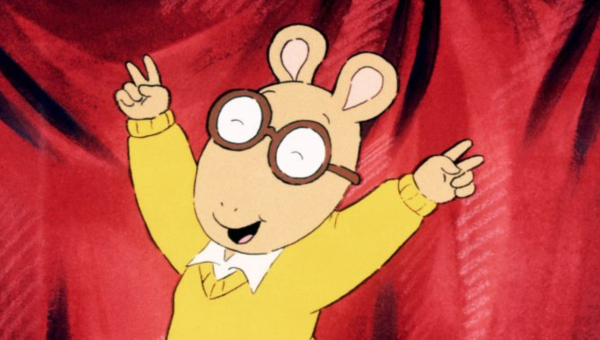KID REPORTERS’ NOTEBOOK
Learning From Arthur

On February 21, PBS Kids will celebrate the 25th and final season of Arthur, the longest-running animated series for children in the United States. Viewers will be treated to four special episodes after a marathon week of 250 episodes and get a glimpse of what the future holds for Arthur and his friends.
I recently spoke with Marc Brown, the award-winning creator of the book and TV series. He published the first title in the series, Arthur’s Nose, in 1976. The idea for a lovable aardvark came from a bedtime story Brown had told his son. Since then, Brown has published more than 25 books and helmed the successful PBS show.
The series features a diverse group of characters who learn about respect, tolerance, friendship, hard work, patience, and other valuable traits. Family dynamics are also covered, especially in Arthur’s interactions with his little sister. The feisty, sassy D.W. always has an opinion ready.
Brown has just published a new book, Believe in Yourself: What We Learned From Arthur (Little, Brown Books for Young Readers). It celebrates the characters many kids have grown up with, sharing inspiring lessons about overcoming adversity and bridging differences.
Here are highlights from our recent conversation, which has been edited for length and clarity.
What character traits can your audience gain from observing Arthur’s world?
Kids probably relate to Arthur because he feels like a real kid. He makes mistakes, fights with his sister, and sometimes he’ll do bad things, but he learns from them. We see Arthur learning from his mistakes, and that makes him feel like a real kid. Most of all, Arthur has a good heart. He’s a good person, even though he’s not perfect.
You’ve mentioned that you want to “connect kids with other kids by reflecting their lives.” How do you bring a new character to life through writing?
Art, animation, and books should reflect real life. All of the ideas for the books and TV shows come from real life. I encourage kids who are interested in becoming writers or illustrators to keep a sketchbook. Every day, write something down that feels important to you. Then have fun with it, or draw something.
I had a teacher who said, “If you think something is ugly, try drawing it.” I used to live in this place where, out of my window, was this horrible telephone pole with wires, transformers, and connectors. It was a mess! One day, I decided to draw it. I saw the beauty in all of the wires, and the lines that came together, and the form that the transformer had. I saw it in a different way. I keep those things in mind with every book and every television show that we do.
What do you hope kids will learn from D.W., Muffy, and Francine?
They’re strong and not afraid to say what they think. D.W. is so funny. I love writing words to put into her mouth. I grew up with three little sisters, and they were a lot like D.W. I’d like kids to appreciate the fact that they’re strong female characters, and television needs more of them.
Mrs. MacGrady once said, “Racism is like a disease. If you don’t treat it, it’s just going to get worse.” How does Arthur help kids deal with injustices, hate, and racism?
One of my favorite episodes was when we had Representative John Lewis [the late lawmaker and civil rights hero] as our guest star. I was in Washington, D.C. Two tables over from me was Representative Lewis. I got my courage up, and I walked over to his table and introduced myself.
I said, “Mr. Lewis, you don’t know this, but you’re one of my heroes. Would you ever consider coming on our show, and doing a program about standing up for something you believe in, so kids could feel what that is like, and learn from you and the courage you displayed in your lifetime?” And he did. It’s one of my favorite shows!

After 25 years, the TV series inspired by Marc Brown’s lovable Arthur is coming to an end.
The book features a moment when we meet Carl, a character who has autism. What did it take to authentically develop Carl?
Our experts and advisors guide us in developing the story so we don’t get anything wrong. A dad wrote to us and thanked us. He realized, from that one program, that his son had autism. He learned about it, and he wanted to write and thank us.
Do you have advice for kids who may be dealing with peer pressure?
I worry about the pressure from social media. Some kids suffer terribly because of what other kids are saying about them. They’re criticizing them, they’re hurting them, and that’s wrong. That bothers me a lot, and I would like to work to do something about it.
Why did you choose to include Mr. Ratburn’s wedding in the series and thus express support for the LGBTQIA+ community?
It’s important for the LGBTQIA+ community to be represented. I was really proud of PBS when they said, “You can do this. You can go ahead and have Mr. Ratburn marry his special someone, Patrick.” That made me feel really good! The best part was the reward we got afterwards, hearing from so many kids who saw themselves represented on television. A lot of adults said, “I wish that episode had been on when I was growing up.”
Your characters accept responsibility and tell the truth. Why is that so important?
One of the best things we’ve done with Arthur is tell kids the truth. That doesn’t happen enough in the media. The truth is so important, especially for kids. You’re building your lives on a foundation right now, as you’re growing. If it’s a foundation that’s not based in truth, then it’s a very shaky house you’re building on that foundation.
